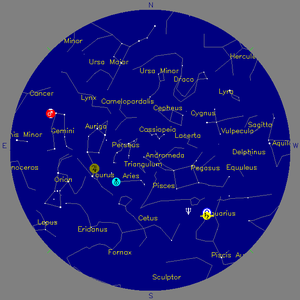Nova T Coronae Borealis: A New Star in the Crown
By - Dr. Mansi Kasliwal from CalTech
Soon, likely this year, a dim white dwarf star named 'T Coronae Borealis' will temporarily increase its luminosity to be a million times as bright as our Sun.
It now appears to faint to see with unaided eye, but for a few days will likely become as bright as Polaris (mag. 2)
It is a star which is on a cycle to explosively brighten about every 80 years, and it has shown signs it is approaching that point.
It is one of the brightest closest stars of this recurring nova type visible to us in the Milky Way.
Why and when will this happen, and where can you see it in the sky?
What are recurring nova, how do they work, and what other similar types of objects are know to astro-physicists?
What can science learn from studying this object relatively close up, by carefully observing it as it reaches this peak of visibility?
The January EAS meeting will be Evergreen Branch Library on Evergreen Way in South Everett, in the meeting room.
We will informally begin a social hour at 2:00 pm, followed by main meeting with presentation at 3:00 PM
Date: Saturday, January 18, 2025
Time: 2 p.m. - 4:30 p.m. Pacific
Location:
Evergreen Branch Library
9512 Evergreen Way
Everett, WA





